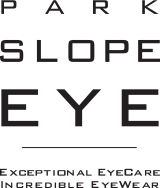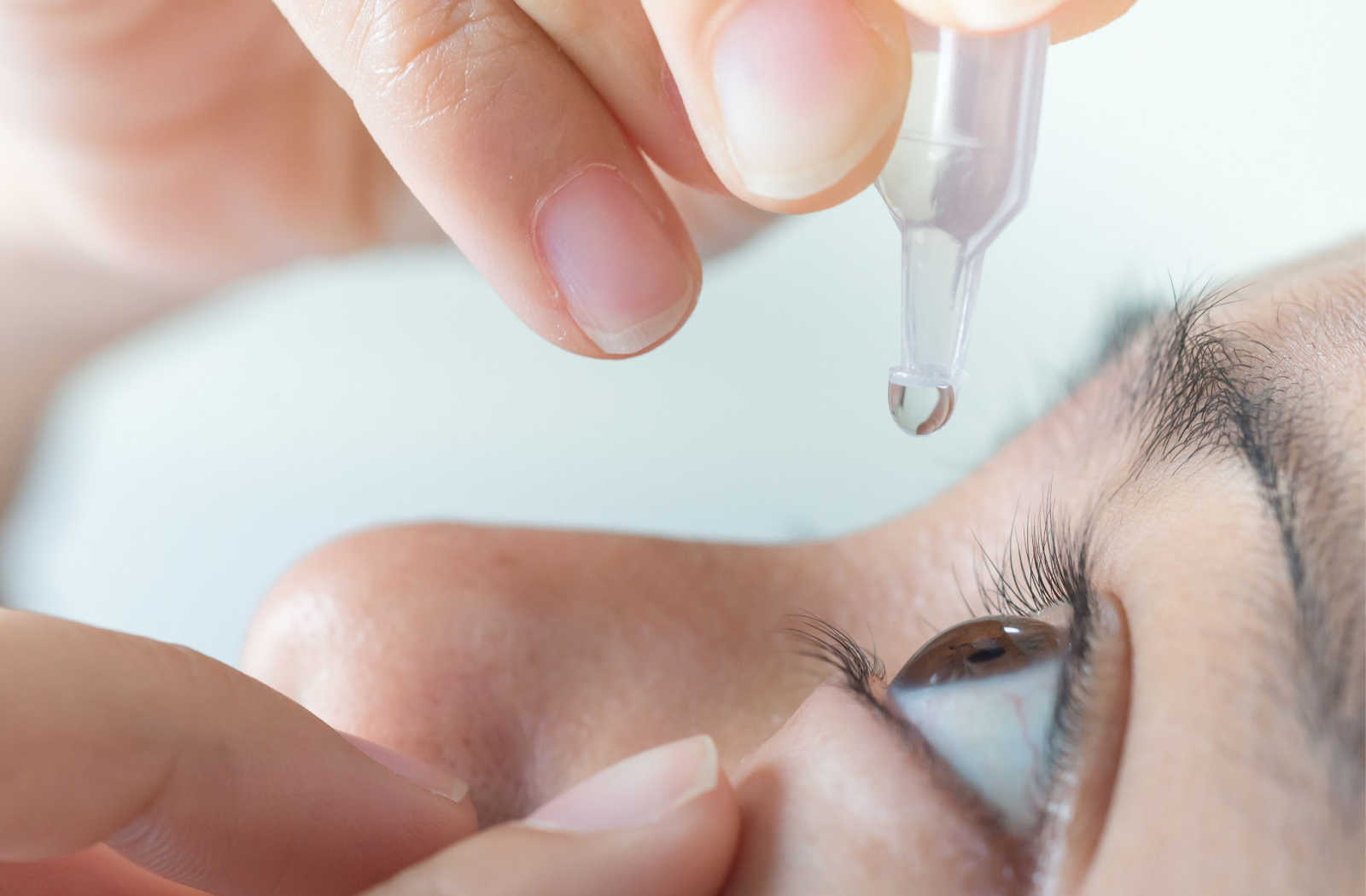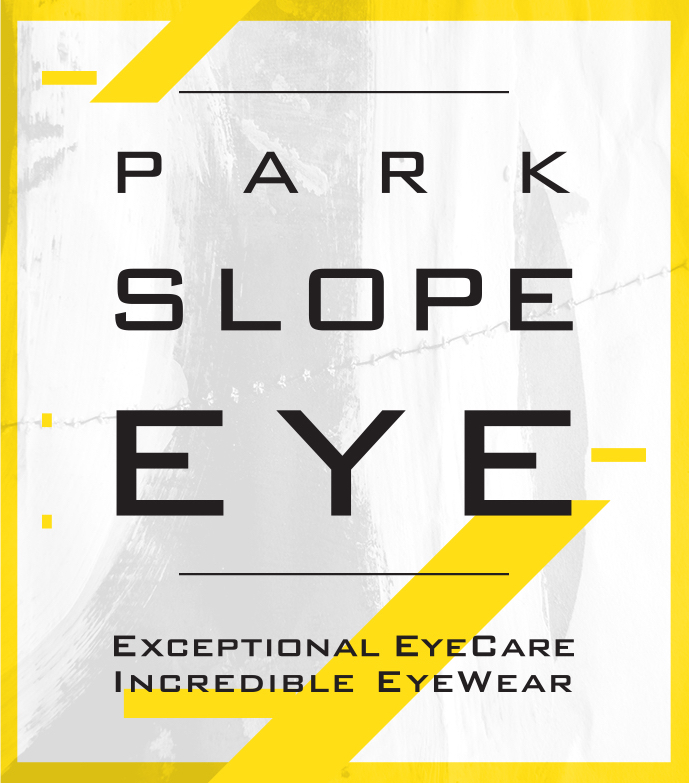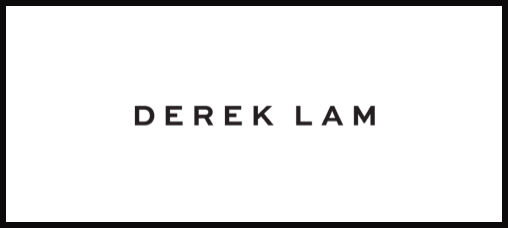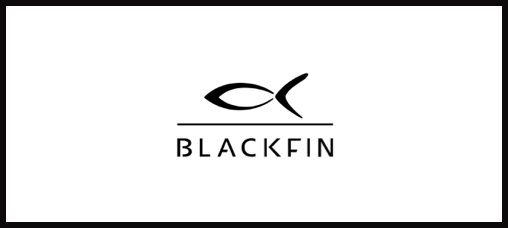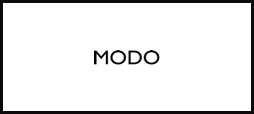Understanding Eye Drops for Dry Eye
Eye drops are often the first dry eye therapy method used when you have scratchy, irritated eyes. Most artificial tears are user-friendly and easily portable for on-the-go relief. But many types and brands are available, making it challenging to find the best one for you.
Should you choose eye drops with preservatives or preservative-free? Can allergy eye drops help, or are redness-relieving eye drops better for irritation?
Choosing the best eye drops for dry eyes depends on the underlying cause and the severity of the condition. Here are some commonly recommended types of eye drops for dry eye:
- Artificial Tears: These are the most commonly used and can be found over-the-counter. They provide temporary relief by lubricating the eyes.
- Preservative-Free Drops: These are suitable for people who need to use eye drops frequently, as preservatives in some drops can cause irritation with long-term use.
- Gels and Ointments: These provide longer-lasting relief and are usually used before bedtime as they can blur vision temporarily.
- Anti-Redness Drops: These reduce redness but should be used sparingly as they can cause rebound redness and worsen dryness over time.
- Prescription Drops: For more severe dry eye or underlying conditions like inflammation, your eye doctor might prescribe medicated drops.
Preservative vs. Preservative-Free Eye Drops
The first obstacle is whether you should use eye drops with preservatives. Artificial tears in multiuse bottles use preservatives to prevent bacteria growth after opening the bottle. Therefore, patients can use the solution inside over longer periods.
Unfortunately, preservatives can be bad for dry eye. Many optometrists warn against using eye drops with preservatives more than 4 times daily. The preservative ingredient in eye drops—benzalkonium chloride (BAK)—is generally safe for short-term use. Still, long-term use can be counterproductive for symptom relief.
The additives in artificial tears can irritate the eyes and, in some cases, result in an allergic reaction. Switching to preservative-free can benefit patients with chronic dry eye.
Most preservative-free eye drops are contained in single-use vials, as there’s no preservative to protect the opened bottle. However, some brands have uniquely formulated or packaged multiuse bottles with preservative-free solutions.
Some notable brands that have introduced preservative-free dry eye drops include:
- Bausch and Lomb Soothe & Soothe XP Preservative-Free
- Refresh Optive Preservative-Free
- Systane Ultra Preservative-Free
Gels vs. Ointments
Most people are familiar with watery artificial tears—eye drops with low viscosity. Eye drops with low viscosity are generally better tolerated and easier to use. Gel eye drops or ointments provide a longer duration of relief but can cause blurry vision.
Imagine looking through a clear window. First, water is poured over the surface. For a moment, visibility might decrease, but the water washes away quickly. Now imagine smearing petroleum jelly or translucent oil over the window surface. You might be able to see a little through the thick substance, but it sticks to the window surface longer and washes away less easily.
Gels and ointments for dry eye can be used during the day, but many optometrists recommend applying at night. The long-term relief can help with morning dry eye, and night use won’t hinder your vision.
Examples of commonly recommended eye gels for dry eye include:
- GenTeal Tears Lubricating Eye Gel
- HydraSense Ultra Night or Night Therapy (Preservative-free)
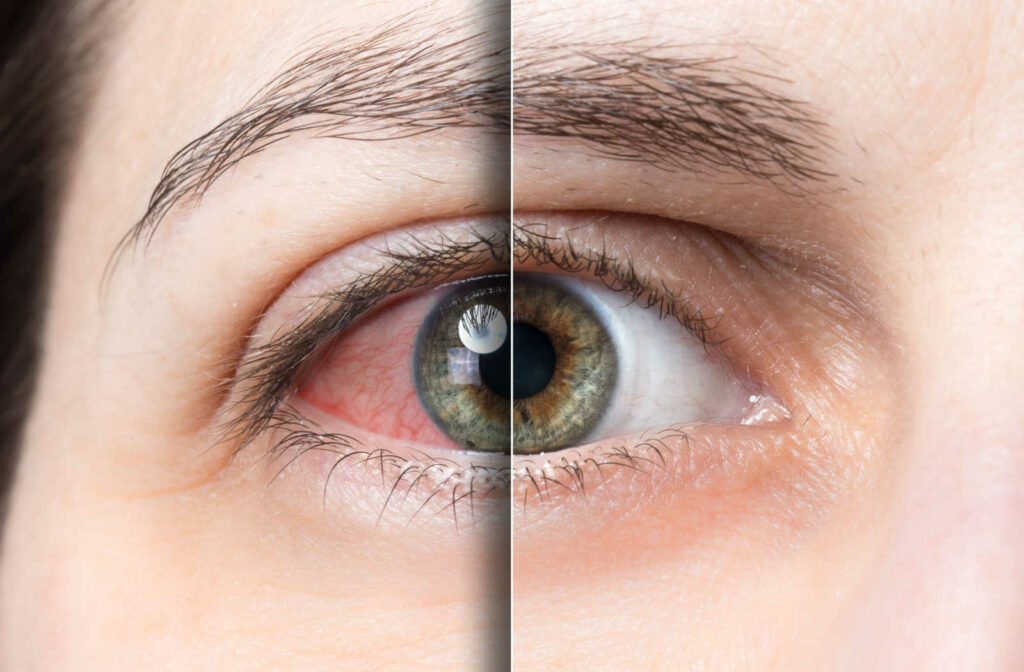
Eye Allergies
When eye allergies cause dry eye, it can benefit patients to use eye drops that treat multiple symptoms. Most allergy eye drops contain antihistamines to reduce symptoms by controlling your immune response. Some allergy eye drops also lubricate the eye to soothe symptoms, including irritation and dryness.
- Bausch and Lomb Alaway Antihistamine Eye Drops (Preservative-Free)
- Pataday Once Daily Relief
Patients should be aware that most allergy eye drops are not safe to use with contact lenses.
Eye Drops with Contact Lenses
Contact lens wear can contribute to dry eye, yet many eye drops are incompatible with contact lenses. Many lubricating eye drops can cause hazy vision while wearing contact lenses. The solution can also build up on your lenses.
It’s always best to give your eyes a contact lens break if you’re experiencing symptoms. However, having contact-friendly lubricating eye drops can come in handy. You might encounter a situation where you can’t remove your contacts just yet, so adding a couple of drops can hydrate and protect your eyes until you can.
- Examples of popular brands with contact-safe dry eye drops include:
- Bausch and Lomb Biotrue Hydration Boost (Preservative-Free)
- Refresh Relieva for Contacts
Redness-Relieving Eye Drops
Irritated, red, or bloodshot eyes commonly occur alongside dry eye. When tiny blood vessels on the sclera (white of the eye) expand, it can make your eye appear red or pink. Redness-relieving eye drops use a decongestant to reduce swelling in the blood vessels, decreasing the appearance of redness.
Avoid using redness-relieving eye drops for more than 72 hours. Overuse leads to tachyphylaxis, where continuous exposure causes a drug to become ineffective. Redness-relieving eye drops can also cause rebound redness, where symptoms return after the eye drops have worn off. Often, symptoms become more severe.
Additionally, people at risk for glaucoma should not use whitening eye drops. Redness-relieving eye drops can increase your risk of developing narrow-angle glaucoma.
Talk to your optometrist if eye redness is a recurring concern. While redness-relieving eye drops can improve irritation, it’s best to use a lubricating solution rather than a decongestant. Your optometrist may also recommend treatment that reduces redness and treats dryness.
For example, Bausch and Lomb Lumify redness-relieving eye drops have a lower risk of redness rebound and tachyphylaxis as it constricts blood vessels with maintaining oxygen availability.
Prescription vs. Nonprescription Eye Drops
Eye drops are commonly available over-the-counter (OTC). Many nonprescription eye drops can be effective in treating dry eye. However, prescription or Rx eye drops are generally better at treating complex or severe conditions.
Your optometrist can assess your dry eye to determine the severity of your symptoms and make a recommendation based on your eye health. You may experience complete relief with value OTC brands or need a personalized solution for your symptoms.
Talk to Your Optometrist
When you need dry eye relief, visit your optometrist. We can recommend a treatment plan customized for your eye health and vision. Instead of suffering through your symptoms, talk to your optometrist about eye drops and more dry eye therapy solutions.
Book an appointment at Park Slope Eye today!
